2011 EWB Challenge Design Brief - Engineers Without Borders UK
2011 EWB Challenge Design Brief - Engineers Without Borders UK
2011 EWB Challenge Design Brief - Engineers Without Borders UK
You also want an ePaper? Increase the reach of your titles
YUMPU automatically turns print PDFs into web optimized ePapers that Google loves.
PART II – SUPPORTING INFORMATION<br />
6 Development Agenda in India<br />
6.1 India at a glance<br />
India is one of the oldest civilizations in the world, with a rich cultural heritage. It has achieved varied socio-economic progress during the 62 years of<br />
its independence. India has become self-sufficient in agricultural production and is now one of the most industrialised countries in the world. It covers<br />
an area of 32,87,263 sq. km, extending from the snow-covered Himalayan heights to the tropical rain forests of the south. As the 7th largest country<br />
in the world, India stands apart from the rest of Asia, marked off by mountains and the sea, which make the country a distinct geographical entity.<br />
Bounded by the Great Himalayas in the north, it stretches southwards and at the Tropic of Cancer, tapers off into the Indian Ocean between the Bay of<br />
Bengal on the east and the Arabian Sea on the west.<br />
There are 22 national languages that have been recognized by the Constitution of India, of which Hindi and English are official languages. Besides<br />
these, there are 844 different dialects that are practiced in various parts of the country.<br />
India is the second most populated country in the world with a growth rate of 1.4%. The median age of the population is approximately 26 years, and<br />
the average life expectancy is around 67 years. Though India boasts high economic growth, it still experiences large-scale poverty. India holds the<br />
world’s largest number of poor people. Out of its total population of more than 1 billion, an estimated 25% were living below the poverty line in 2007.<br />
Nearly 75% of the poor are in rural areas, with most of them being daily wagers, landless labourers and self employed house holders (Poverty in India,<br />
2010).The people of India also face a high risk of being exposed to food and waterborne diseases such as bacterial diarrhea, hepatitis A and E and<br />
typhoid fever, as well as vector-borne diseases such as Chikungunya, dengue fever, Japanese encephalitis, and malaria.<br />
6.2 Development Priorities<br />
The Indian nation faces many challenges that need to be addressed if the quality<br />
of life of its poorer citizens is to be meaningfully improved. These problems include:<br />
• Poor water quality<br />
• High unemployment<br />
• Poor infrastructure<br />
• Poor health services<br />
• Unreliable power supply<br />
• Low-quality housing<br />
The government is currently providing funding for sustainable initiatives and projects,<br />
with the intent of providing solutions to the above problems that are sustainable and<br />
have minimal negative environmental impact.<br />
23



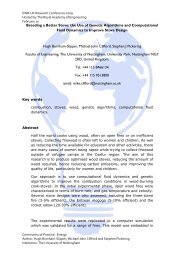

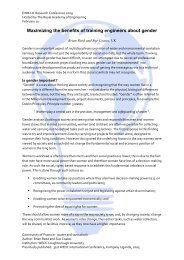
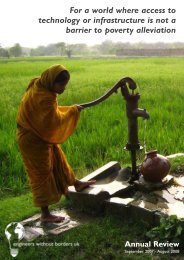
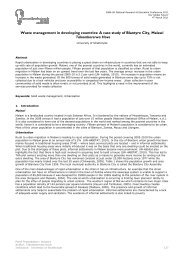
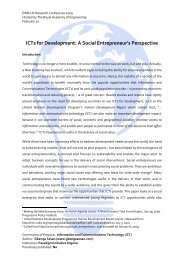
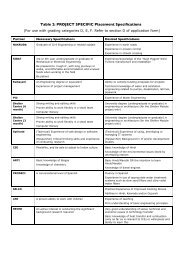


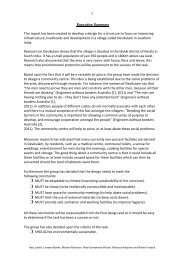


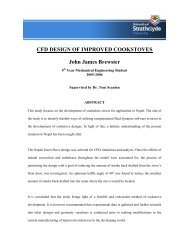
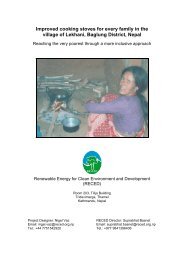
![Ethical Fundraising Guidance[1].pdf - Engineers Without Borders UK](https://img.yumpu.com/36288951/1/184x260/ethical-fundraising-guidance1pdf-engineers-without-borders-uk.jpg?quality=85)